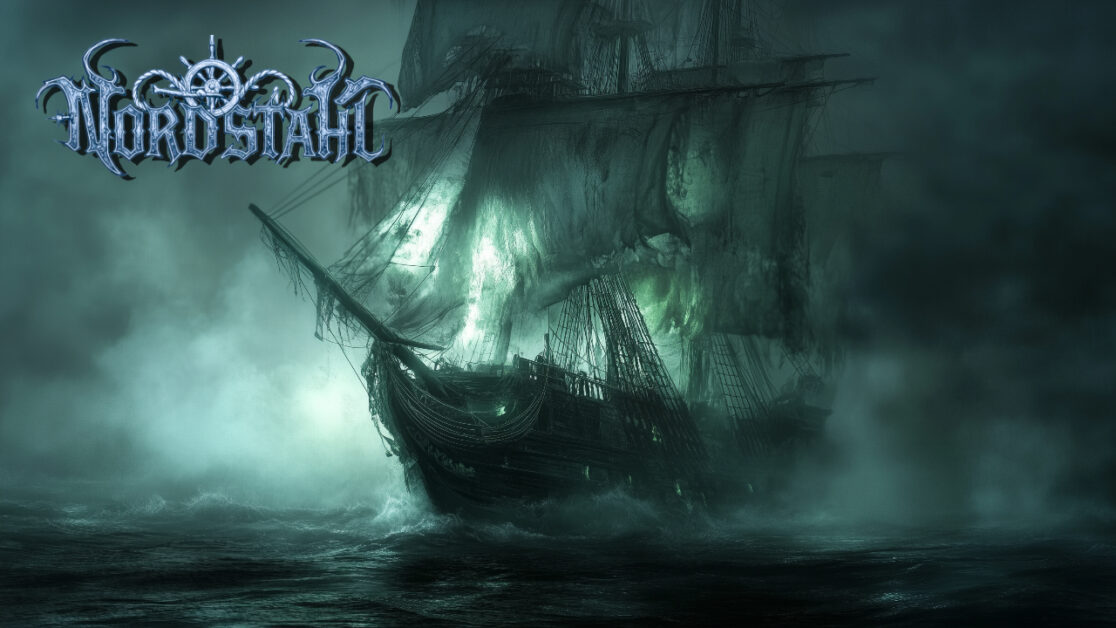A big welcome to all my lovely readers and music lovers. Let’s welcome German artist NORDSTAHL. This artist released a song on 18th July called “Das Geisterschiff”. Let’s take a closer look at the song
The song opens with a bold, dramatic yet soft piano melody which gets bolder and darker when the guitar and drum sound are added to it. If at any point, you were not convinced to listen to this song, the intro will sway you instantly
It is time to talk about the theme of the song. In an age of quick fixes and rapid gratification, “Das Geisterschiff” dared to question what could not be undone. This German-language maritime ballad reimagines the classic ghost ship narrative as a visceral meditation on permanent repercussions, a concept that resonates strongly in our age of digital permanence and environmental irreversibility. What makes this song unique? someone may ask. While many musicians use nostalgia to provide consolation, this song delves into darker territory and Genuine German-language craftsmanship in a worldwide music landscape. The song is a Maritime folklore recreated for contemporary anxiety, Philosophical profundity wrapped in relatable, disturbing mental images.
Let’s talk more about the production of the song. The composition’s emotional impact is built on stark contrasts: where hope previously set the course, now grief tears through the sails. Musically, “Das Geisterschiff” calls for an arrangement that reflects its lyrical melancholy, whether through minimalist instrumentation that replicates the emptiness of the fog-bound vessel or through developing orchestral swells that represent the weight of eternal damnation. The German language provides an extra element of seriousness, with its consonants slamming like waves against a sinking hull. The bridge adds to this misery by declaring that “God is distant, the beast reigns here,” changing the ghost ship from a mere legend to a potent symbol for spiritual abandonment and moral reckoning.
Drawing on centuries of nautical history and the Flying Dutchman legend, (The Flying Dutchman is a legendary ghost ship, forever doomed to sail the seas without ever reaching a port. It’s a common motif in nautical folklore, often depicted as an ill omen for sailors who encounter it. The legend likely originated during the Dutch Golden Age of maritime power.)The song tells its story with dramatic visuals of broken oars, tattered sails, and endless fog. The continuous phrase “Nothing can change what once was” acts as both an anchor and a curse, drawing listeners further into the vessel’s unending journey.
This is more than just a song about a cursed ship; it’s an investigation of how our mistakes may become the vessels that carry us through life, unable to find safety or salvation. I love that the artist was so committed to the message of the song that even the art of the song had the scary ship in flames, skulls, and a compass. Perfect for fans of dark folklore, existential themes, and the eternal power of nautical mythology reimagined as a modern musical story. For fans of dark folk ballads, Gothic seafaring stories, German-language ambient music, philosophical lyrics, and eerie acoustic arrangements. Key themes include regret, eternal consequences, marine folklore, spiritual abandonment, irreparable blunders, and existential dread. This song is further proof that, music crosses boundaries and touches people even if they don’t understand what it is. I really enjoyed the song and I can’t wait to hear more music from him
Stream “Das Geisterschiff” on Spotify
Follow Nordstahl on Instagram and YouTube
- THE BEAUTIFUL LIE: RICHARD GREEN UNPACKS UNIVERSAL SADNESS IN “FAKE MOMENTS” - 9 December 2025
- HANR IGNITES PURE VIBES WITH HER ELECTRIFYING NEW SINGLE “ENERGY” - 9 December 2025
- EXZENYA IS BACK AND BLURRING LINES WITH “TILL I’M DRUNK AND CONFUSED” - 9 December 2025
